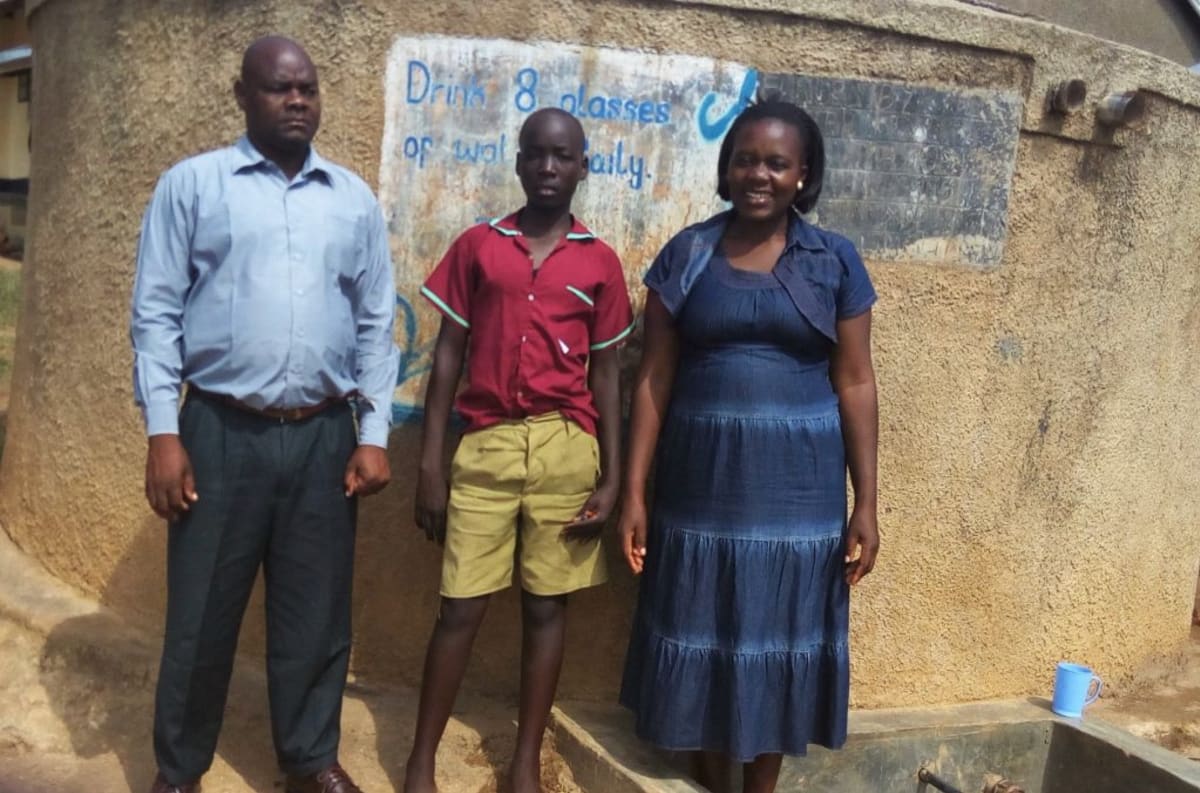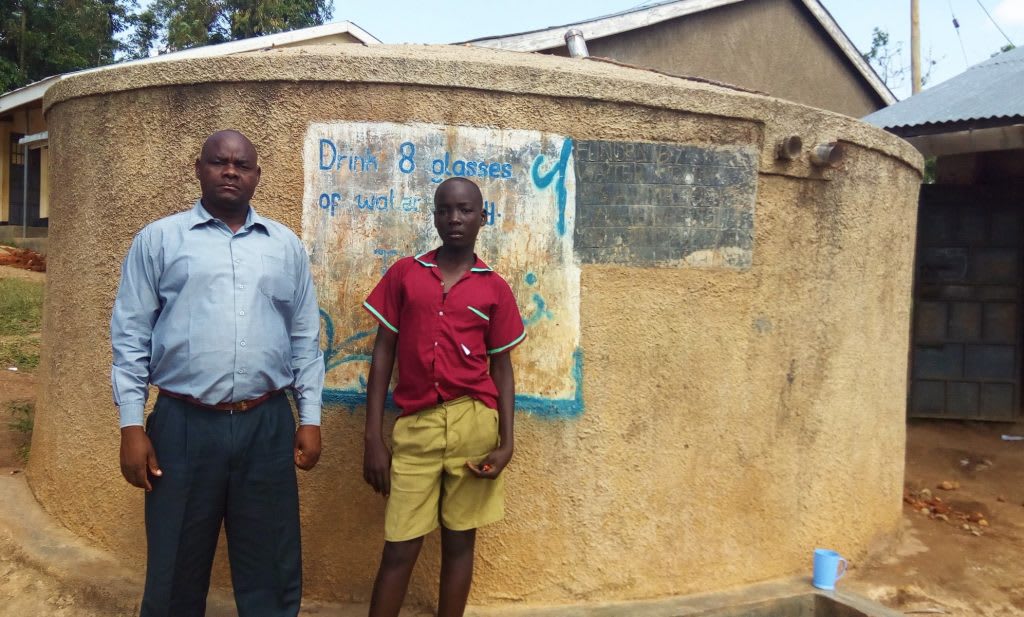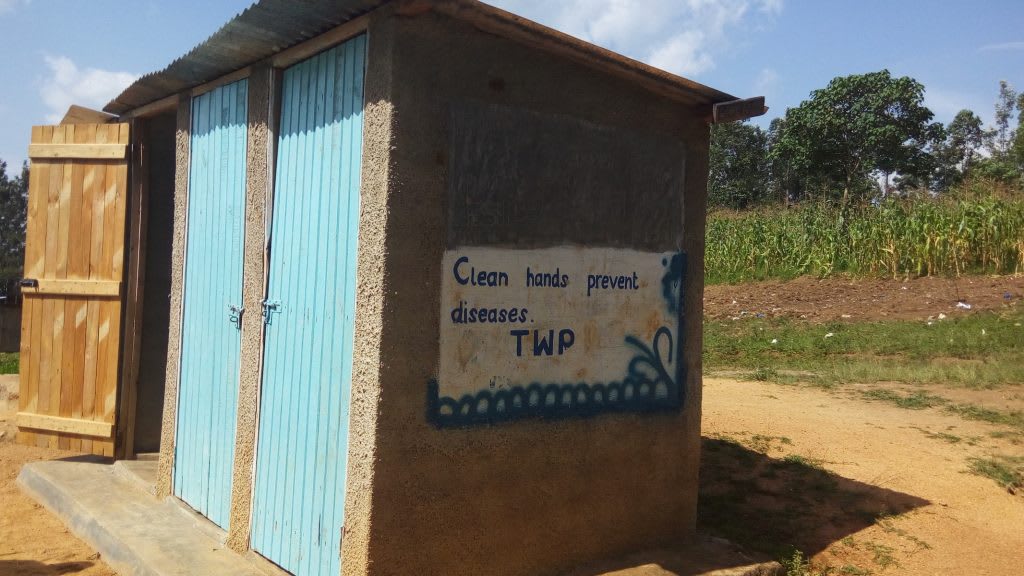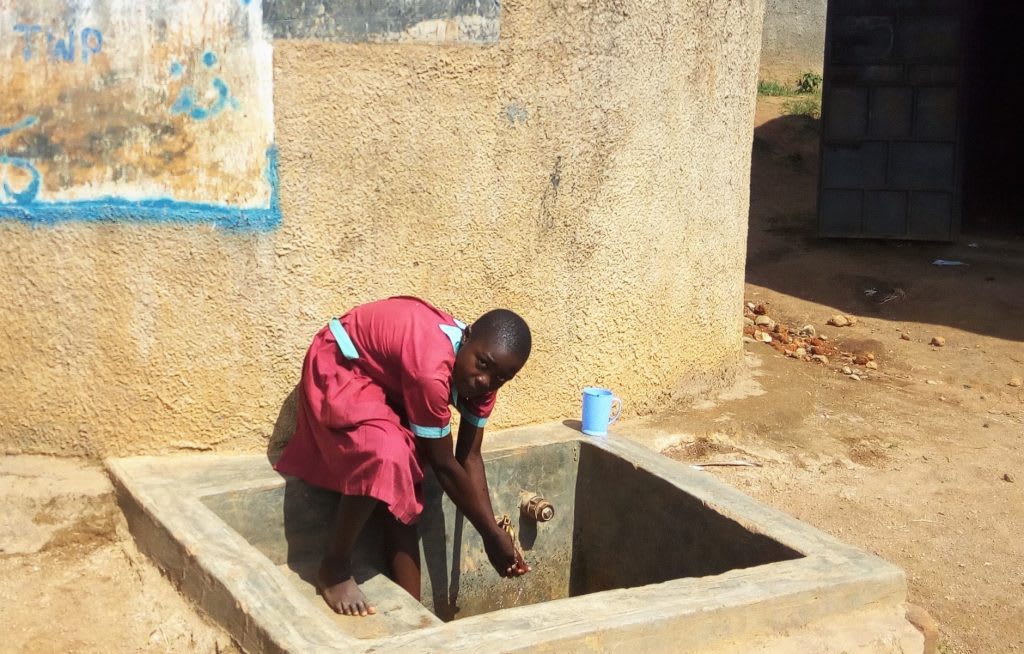This project is a part of our shared program with Western Water And Sanitation Forum (WEWASAFO). Our team is pleased to directly share the below report (edited for clarity, as needed).
Welcome to the School
Eshivembe Primary School is located in Bushibo Village, Shiunzu sub-location, Butsobutso Central location within Lurambi Constituency of Kakamega County. Eshivembe Primary School was started in 1998 by community members. The community saw the need to start the school, since the nearest school was three kilometers away from their Shiunzu Village. Mr. James Sakwa was the main man behind this, who saw the challenges children were facing to access education: Lateness, pupils reaching school too tired to study well, and a lack of security when traversing through sugarcane plantations, hills and valleys.
The school has a total population of 280 primary students of whom 138 are boys and 142 are girls. The early education section has a total of 78 pupils of which 47 are boys and 31 are girls. With regard to the teaching staff, the school has 11 teachers: three are male and eight are female. The school also employs two support staff (one cook and one watchman).
A normal day in this community starts as early as 5AM, when children wake up to take a bath, brush teeth, eat breakfast and rush to school by 6:30AM.
These students arrive at school at 7AM. Their school day starts with cleaning the classrooms and picking rubbish up within the school compound. Since the school has no access to safe water within the compound, students must go to an unprotected spring that is 400 meters away. Once returned with full water containers, they then proceed to do morning exercises. By 8AM, they line up for prayers and announcements from both the teacher on duty and the headteacher.
In between morning classes, students are sent to fetch water from the spring to supply the school lunch program for grades seven and eight and the teaching staff. Girls are often the ones sent to fetch water while classes continue as usual. This group of young ladies miss class, and it is obvious that affects their academic performance.
After lunch, pupils are seen once again going to and fro from the spring, fetching water for cleaning up classrooms and for drinking in the afternoon.
All the while, students' mothers and fathers are in the fields farming sugarcane. Sugarcane is the main source of livelihood in Bushido Village.
Water Situation
The nearby spring is unprotected, meaning that there is no catchment system from which water can be drawn. Instead, students and community members use small containers, scooping the flowing water to fill their plastic jerrycans. Since primary students are so young, they can only manage to carry containers between three and five liters. It is obvious that water is dirty before it is even poured or transported back to the school. Spring water is contaminated by surface runoff, nearby farming, littering, animals, and open defecation. The water is cloudy, and you can see algae floating on top.
Students often get in trouble going to and from the spring. There is no supervision for boys or girls, and the girls will especially prefer to travel in groups. Once at the spring, students report that community members are very hostile. The children must wait until all the community members have finished gathering water for themselves, and many of the younger students fear going to the spring altogether. Some students will avoid attending school, afraid that the teachers will force them to fetch water there. Not only can community members be hostile towards students using their water, but the snakes are too! The water point is surrounded by bushes, providing the snakes with a suitable home.
Though it is obvious the water is unsafe for drinking, there is still a huge demand. It is always being used for drinking, cooking, or cleaning in the school. Right as students arrive at the school with their full containers, it is immediately expended. After drinking water from the spring, cases of waterborne sickness such as dysentery, typhoid, and cholera are rampant.
Sanitation Situation
There are only two pit latrines serving a total student population of 358. These two are left after last week, when the mud walls of two others collapsed. Since two latrines are inadequate for the high student population, open defecation is a huge issue. Students cannot manage to wait in line that long, and fear being late for class. The school has been issued a closure notice by the government that states a need for more latrines. If this need is not met, the school will be shut down.
Due to extreme poverty, many pupils lack toilet paper, and instead use banana leaves which can be seen on the latrine floors. These leaves contaminate hands, so there have been increased outbreaks of diarrhea. And because of these poor sanitation facilities, girls often abandon their schooling before receiving an adequate education.
There are also no hand-washing stations for students to wash up after using the latrine, or before meals. Nor are there dish racks where students and teachers can dry their drinking and eating utensils. The school disposes of its garbage in the surrounding sugarcane plantations.
After our initial visit, it was apparent that both students and staff are ignorant of good hygiene and sanitation practices. Nobody bothered washing their hands, and utensils were being aired out on the rocks and ground around the kitchen. There was also no way to keep the latrines clean enough, so students often suffer from infections.
When talking about the situation with Lauren, a student at Eshivembe Primary, she admitted, "I don't enjoy coming to school. The school sends us to fetch water every day, so I am missing classes. Also, the latrines are old, look bad and dirty, and this makes the young pupils fear using them. Thus they urinate and defecate behind classrooms. I wish someone would see our plight and send us help by construction safe and sound sanitation with a clean water source in the school."
Plans: Hygiene and Sanitation Training
The school sent a letter to WEWASAFO requesting help after they received their closure notice. They heard about this hygiene, sanitation, and water work through the Chris Ochango spring protection project. After the first visit, we agreed to help the school meet their needs. The school staff, its students and parents have also agreed to do what is necessary to make this project succeed. That includes attending hygiene and sanitation training for three days! Based on our initial visit to this school, the facilitator has set four goals:
- Highlight the dangers of open defecation
- Demonstrate the proper way to fetch and store water
- Illustrate disease transmission and how to build barriers
- Teach proper sanitation and health practices
The facilitator will also teach participants on how to build a strong CTC (child to child) club. The CTC club will lead other students into healthy habits, as well as maintain the two hand-washing stations being delivered for this project.
Plans: Rainwater Catchment Tank
A 30,000-liter rainwater catchment tank will be constructed on school grounds. Teachers, students, and parents will gather the local materials needed for this project, including sand, ballast, bricks, and hardcore. This contribution will fuel a sense of responsibility for the school and community to take care of their new facilities. Once materials are mobilized, the WEWASAFO team will arrive to lead the construction effort.
Plans: VIP Latrines
Two triple-door latrines will be constructed, providing three new latrines for each gender. Latrine materials will be mobilized the same way as the tank, ensuring the school feels these facilities are truly theirs.
Plans: Hand-Washing Stations
Two hand-washing stations will be delivered to the school before training. These come in the form of two 60-liter containers fitted with a tap. The training facilitator will demonstrate how to properly wash hands, and then students will have a chance to practice in groups. The CTC club will be responsible for filling the hand-washing containers on a daily basis.

 Rainwater Catchment
Rainwater Catchment
 Rehabilitation Project
Rehabilitation Project
























